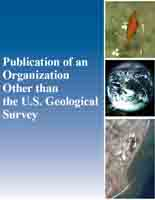Dryland organisms exhibit varied responses to changes in precipitation, including event size, frequency, and soil moisture duration, influencing carbon uptake and reserve management strategies. This principle, central to the pulse-reserve paradigm, has not been thoroughly evaluated in biological soil crusts (biocrusts), essential primary producers on dryland surfaces. We conducted two experiments to investigate carbon uptake in biocrusts under different precipitation regimes. In the first, we applied a gradient of watering amounts to biocrusts dominated by moss or cyanobacteria, hypothesising distinct pulse-response strategies. The second experiment extended watering treatments over three months, varying pulse size and frequency. Our results revealed distinct carbon uptake patterns: moss crusts exhibited increased CO2 uptake with larger, less frequent watering events, whereas cyanobacteria crusts maintained similar carbon uptake across all event sizes. These findings suggest divergent pulse-response strategies across biocrust types, with implications for modelling dryland carbon dynamics and informing land management under changing precipitation regimes.


